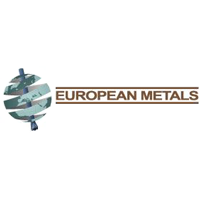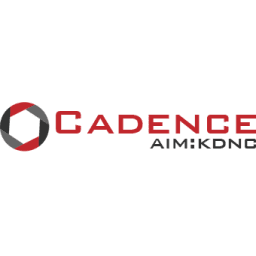European Metals Holdings Limited (ASX and AIM: EMH) has told DirectorsTalk about the successful manufacture of >99.5% pure lithium carbonate using an industry proven, sodium sulphate roast-based flow-sheet from mica-concentrate from the Cinovec Project.
Cinovec, which contains the largest lithium resource in Europe and one of the largest undeveloped tin resources in the world, is the Company’s 100% owned lithium and tin project located in the Czech Republic.
The roasting flow-sheet reflects a simplified version of the well-proven technology that converts spodumene concentrate to lithium carbonate. Numerous lithium carbonate plants currently employ this technology internationally.
Highlights:
|
· Production of >99.5% battery grade lithium carbonate |
|
· High roast recoveries of 87% achieved |
|
· Reduced process costs – key reagent recycled |
|
· Minimal leaching of unwanted impurities, resulting in simpler precipitation of battery grade lithium carbonate |
|
· Offtaker and end user testing – production of lithium carbonate samples underway |
European Metals Managing Director Keith Coughlan said, “This is a major milestone in the development of the Cinovec project and we are delighted with the results. We have now produced battery grade lithium carbonate via a second process route. This follows the successful production of battery grade material via acid leach during the scoping study last year.
These results follow the previous success of the project team in developing a robust, simplified flow-sheet for beneficiating the run-of-mine ore to produce a lithium mica concentrate using high intensity wet magnetics.
Having proven the processing circuit, the team is now focused on delivering the Pre- Feasibility Study by the end of March 2017. Part of this process includes further optimising the roasting and hydrometallurgical circuits to produce market samples for off taker and end user testing.”
Further details of the Sodium Sulphate Roast flow-sheet
The tests were conducted at Nagrom Metallurgy, who have industry-wide experience treating lithium ore, and have ISO:8000 accreditation. The testwork was a progression from the extensive investigation carried out by Dorfner Anzaplan earlier in the year which identified the process as one of two preferred routes that should be progressed for lithium carbonate precipitation.
The sodium sulphate flow-sheet is similar to the well proven Chinese sulphation roast but instead of using acid for leaching the concentrate, sodium sulphate is used and recycled back to the roast. This technology uses far less reagents and is more environmentally friendly as it does not produce unwanted by-products. An additional benefit of this process, other than the minimal use of reagents and elimination of acid usage, is that its chemical conditions are milder, which is expected to translate into lower costs compared with the sulphation processes.
Next steps for Sodium Sulphate Roast
Current results are from the first phase of the test work program. A larger program begins in mid-December. During the next phase of testwork, the hydrometallurgical parameters will be fine-tuned in with a focus on improving lithium recovery and reducing reagent consumption. The aim of the upcoming larger testwork program is to:
|
· further optimise the roasting and hydrometallurgical conditions |
|
· provide design input into the Pre-feasibility Study which is due to be completed by the end of March 2017 |
|
· produce a 5kg battery grade lithium carbonate sample for offtaker and end user testing |
|
· improve understanding of variability effects for changes in concentrate feed composition |
Tin and Tungsten Testwork Results
ALS Bernie in Tasmania have recently concluded a tin and tungsten liberation Lock-cycle testwork program with favourable results. A final tin concentrate grade of 61.7% was achieved after dressing.
Tin, in particular remains a key co-product credit for the Cinovec Project. The current price of tin on the London Metals Exchange is at recent highs in the vicinity of USD 21,000/t. Prices in this range represent a significant economic benefit to the project.
Under an EU funded research program FAME, metallurgical testwork on Cinovec samples provided by the Company continues. The program is principally focused on crushing and milling optimisation.
Nagrom Metallurgy
Nagrom conducts testwork and analysis for a number of Australian based lithium explorers and developers. They have also carried out a significant amount of lithium hydromet work for major industry participants, and have been actively involved in the Australian mining industry for some 30 years.
QA/QC
Strict QA/QC program has been implemented by both Nagrom and EMH, all samples are duplicated with industry standards inserted. Nagrom has used multiple assay runs, including XRF, ICP-MS and ICP-OES to confirm the accuracy of the results.
BACKGROUND INFORMATION ON CINOVEC
PROJECT OVERVIEW
Cinovec Lithium/Tin Project
European Metals owns 100% of the Cinovec lithium-tin deposit in the Czech Republic. Cinovec is an historic mine incorporating a significant undeveloped lithium-tin resource with by-product potential including tungsten, rubidium, scandium, niobium and tantalum and potash. Cinovec hosts a globally significant hard rock lithium deposit with a total Indicated Mineral Resource of 232.8 Mt @ 0.45% Li2O and an Inferred Mineral Resource of 606.8 Mt @ 0.43% Li2O containing a combined 6.46 million tonnes Lithium Carbonate Equivalent.
This makes Cinovec the largest lithium deposit in Europe and the fourth largest non-brine deposit in the world.
Within this resource lies one of the largest undeveloped tin deposits in the world, with total Indicated Mineral Resource of 28.6 Mt @ 0.23% Sn and an Inferred Mineral Resources of 59.7 Mt grading 0.21% Sn for a combined total of 178kt of contained tin. The Mineral Resource Estimates have been previously released on 23 November 2016. The deposit has previously had over 400,000 tonnes of ore mined as a trial sub-level open stope underground mining operation.
A Scoping Study conducted by specialist independent consultants indicates the deposit could be amenable to bulk underground mining. Metallurgical test work has produced both battery grade lithium carbonate and high-grade tin concentrate at excellent recoveries with the Scoping Study. Cinovec is centrally located for European end-users and is well serviced by infrastructure, with a sealed road adjacent to the deposit, rail lines located 5 km north and 8 km south of the deposit and an active 22 kV transmission line running to the historic mine. As the deposit lies in an active mining region, it has strong community support.


